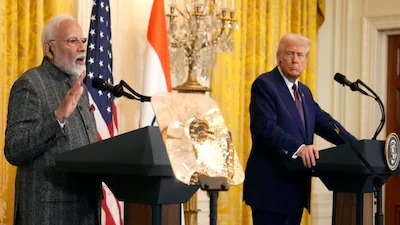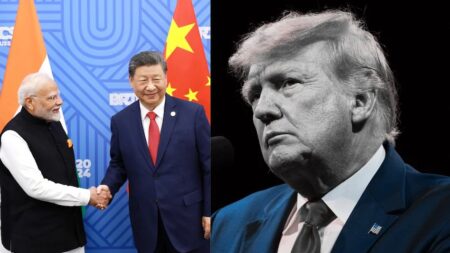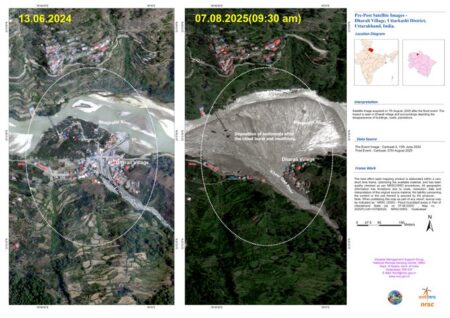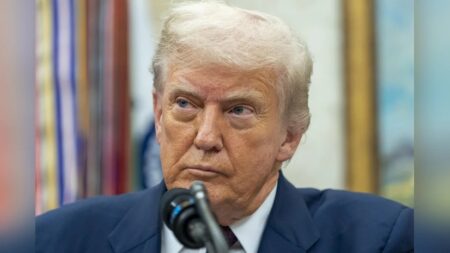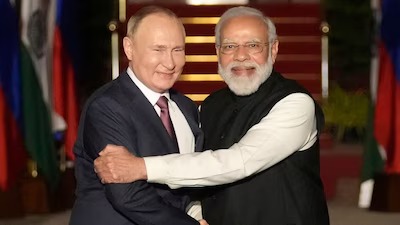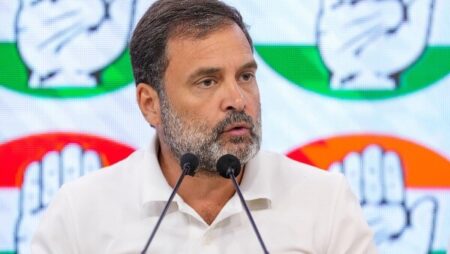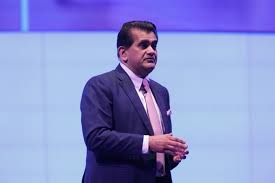New Delhi:Faced with US President Donald Trump’s tariff hikes and political pressure, Prime Minister Narendra Modi is adopting a strategy of quiet defiance — defending farmers’ interests, rallying international partners, and letting patience be his diplomatic weapon.
Trump’s decision to impose a steep 50% tariff on Indian goods late Wednesday was met not with a phone call from Modi, but with a more calculated move. On Thursday, the prime minister spent over an hour in talks with Brazilian President Luiz Inácio Lula da Silva, discussing joint efforts to counter the punitive duties — both India and Brazil being targeted with the same rate. At a public event earlier that day, Modi made his stance clear: he would “not compromise” on the interests of Indian farmers, even at a “heavy price.”
The tension comes amid Trump’s anger over India’s continued energy and trade ties with Russia. On the very day Trump announced an additional 25% tariff — citing India’s Russian oil imports — National Security Adviser Ajit Doval landed in Moscow. From there, he signalled defiance, announcing that Russian President Vladimir Putin’s visit to India was “almost finalised.” This will be followed by Foreign Minister S. Jaishankar’s Moscow visit later this month, and Modi’s own participation in the Shanghai Cooperation Organisation (SCO) summit in Beijing on September 1, where he could hold talks with both Putin and Chinese President Xi Jinping.
These moves are expected to further irritate Washington. On Thursday night, Trump declared that trade negotiations with India would remain frozen until the issue of Russian oil purchases was resolved. According to senior government sources, Modi has no intention of signing a one-sided trade deal that grants the US unfettered access to India’s agriculture, dairy, and fisheries sectors — demands India has firmly rejected.
For the prime minister, the standoff is also an opportunity to reinforce his political image among farmers, portraying himself as their “real messiah.” The gesture seeks to distance him from the bitter memory of the 2020–21 farm law protests, which ended with a government rollback. His administration continues to provide annual financial aid of ₹6,000 per farmer under the PM-Kisan Nidhi scheme, alongside crop insurance support. On Thursday, Modi met a delegation of farmers from Tamil Nadu in Parliament — a symbolic move underscoring his commitment.
Relations between Modi and Trump have cooled, with only two phone conversations in the past 100 days — one after the April 22 Pahalgam attack, and another in June when Trump called during Modi’s Canada visit. On that occasion, Modi dismissed Trump’s claim of brokering an India–Pakistan ceasefire during Operation Sindoor, later reiterating in Parliament that “no world leader” had influenced India’s decision-making.
For now, New Delhi is focusing on building a united front with like-minded nations against Washington’s trade tactics. India’s official statement calling US actions “extremely unfortunate, unfair, unjustified, and unreasonable” marks some of the strongest language directed at the US in decades.
Officials believe that Trump’s stance could change swiftly if his own geopolitical calculations shift — especially if a Trump–Putin meeting leads to progress on the Russia–Ukraine conflict. They point out that the US itself once encouraged India’s Russian oil purchases and continues to import critical materials like uranium from Moscow.
Any trade agreement with Washington, they insist, will only be signed if it aligns with India’s “national interest” — and without sacrificing the livelihoods of its farmers. Until then, Modi appears content to bide his time, strengthen alliances, and let Trump’s next move unfold.


